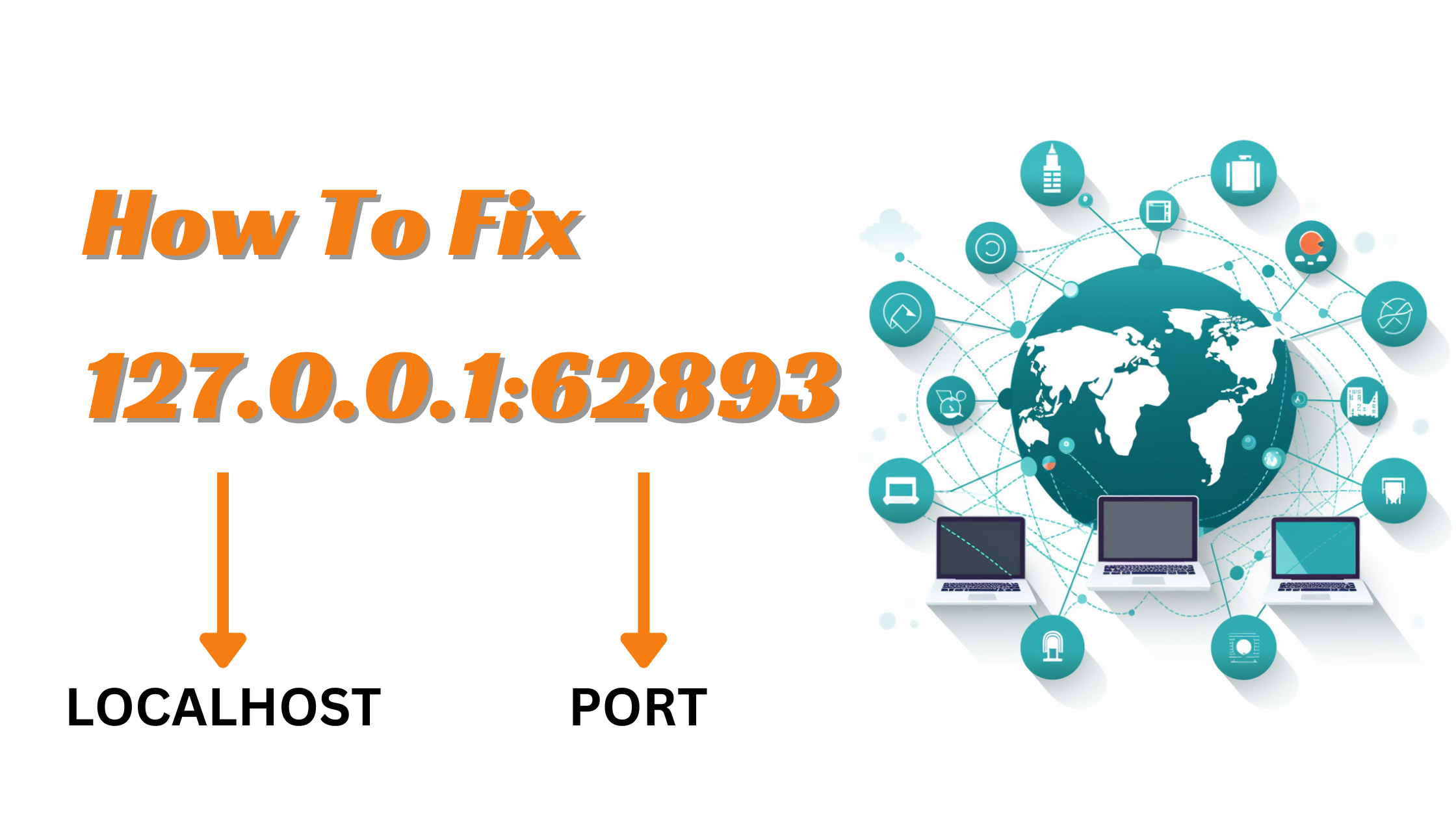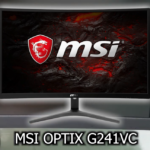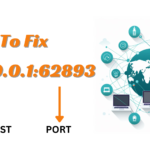127.0.0.1:62893: Understanding the Meaning and How to Fix It?
127.0.0.1:62893 is a unique IP address referencing the machine from which you are operating.
Working on your computer, have you ever come across the mysterious code 127.0.0.1:62893? Though it seems complicated, knowing its components will be beneficial! The error message “Disconnected from the target VM, address: 127.0.0.1:62893” often shows up on the screen throughout the development process.
IPv4 and IPv6 are the two varieties of IP addresses. While IPv6 addresses are 128-bit values written in hexadecimal (e.g., 2001:0b8:85a3:0000:0000:8a2e:0370:7334), IPv4 addresses are 32-bit numbers generally expressed in dotted decimal form (e.g., 192.168.1.1).
However, port numbers are used on a device to name particular operations or services. They separate traffic for distinct uses so that several services may run on a single IP address. For HTTP, for instance, online traffic usually uses port 80; for HTTPS, port 443; for SMTP, port 25.
This blog post will dissect what 127.0.0.1:62893 represents, how it operates, and how to correct a typical issue.
Value In Knowing Network Fundamentals
Anyone in IT, networking, or software development needs a strong foundation in network principles. Knowing IP addresses and port numbers enhances security network resource protection, performance optimization, and diagnosis of connectivity problems. Furthermore, it enables experts to set and debug systems properly, guaranteeing seamless connection between devices and services.
Summary Of The Subject: 127.0.0.1:62893
An IP address and a port number combine in the address 127.0.0.1:62893. 127.0.0.1 is the loopback address—a special-purpose IP address a host uses to interact with itself. Combined with a port number, it allows local machine testing and development free from system exposure to outside networks.
We will examine the details 127.0.0.1:62893 in this blog, including its relevance, typical problems, and recommended methods for diagnosing and maximizing its use. Whether your job is network administrator, developer, or IT enthusiast, knowing this IP can help you to control and fix local network configurations.
What Is 127.0.0.1? ( Loopback Address)
The most often used loopback address in IPv4 is 127.0.0.1. Reserved for a host to send messages to herself, loopback addresses are a spectrum of IP addresses (127.0.0.0 to 127.255.255). It’s a local testing method for network applications without transmitting traffic across the real network.
Using 127.0.0.1 causes network traffic to return to the same machine. Because it lets you replicate network environments without impacting other devices, this is very helpful for development, testing, and troubleshooting needs. For instance, if you run a web server on your local computer, you can access it by 127.0.0.1 to guarantee it’s operating as it should without letting the internet know.
What 127.0.0.1:62893 Can Do for You?
There are various benefits to address 127.0.0.1:62893.
- It gives developers a safe space free from public view by letting them test and troubleshoot programs within.
- Learning about networking concepts, including TCP/IP systems and client-server communication, benefits one.
- Early identification and reduction of any security risks depends on local-host traffic monitoring.
- Debugging helps to identify problems connected to networks, enhancing the stability and performance of applications.
- Working in a controlled environment, localhost avoids issues with other programs.
How to Use 127.0.0.1:62893
The address works as follows in a basic sense:
- Your device runs an application trying to interact with another process.
- It wants to interact with a service on the same system, so it uses “localhost,” (127.0.0.1).
- The port number (62893) informs the operating system which service or application should handle incoming traffic.
For example, a development tool might utilize this address to interface with a local server for debugging needs.
Safety Concerns
Although port 62893 and the loopback address are usually safe, there are a few factors to consider:
- Make sure that your firewall settings allow communication across port 62893 if needed. Blocking this port could stop some programs from operating as they should.
- If you are unfamiliar with the application or service, be cautious of any software trying to interact with this port. Malicious programs could use this port for illegal correspondence.
- Now and then, make sure no illegal programs are using any other suspicious port or port 62893 on your machine.
Please Note: Even though localhost is designed chiefly for local use, the concepts you gain from experimenting can be used in general networking scenarios. You should now be able to interpret and utilize 127.0.0.1:62893 with ease.
The Step-by-Step Troubleshooting Guide
STEP 1: Verify whether the service is currently running.
- Check that the service meant to be listening on 127.0.0.1:62893 is running.
- Open Command Prompt and run: cmd netstat -an | find “62893”.
- Mac or Linux: Run bash from an open terminal using lsof -i:62893.
This command will list the process utilizing port 62893 and indicate whether any service is listening on that port. If no service turns up, start the application or service and try again.
STEP 2: Look for port conflicts.
- Verify no other service makes use of port 62893.
- If you discover another service, you can stop it or switch the port used for your application.
STEP 3: Confirm Firewall Guidelines
- On particular ports, firewalls can restrict access
- To be sure port 62893 is permitted, review your firewall settings.
Firewall from Windows:
- Advanced Security Open Windows Defender Firewall
- Review Inbound and Outbound Rules to find rules blocking Port 62893.
Firewall from Apple:
- Under Security & Privacy, under Firewall Settings in System Preferences
STEP 4: Review application settings.
- To guarantee your program is configured correctly to access 127.0.0.1 and port 62893
- Review the configuration files or settings of it.
STEP 5: Restart network services
- Restarts of network services occasionally help to fix underlying problems.
- Windows: cmd netsh winsock reset
- Restart the network service using the bash sudo system Linux/Mac.
STEP 6: Update or reinstall network drivers
- Issues can arise from corrupt or antiquated network drivers.
- Make sure your drivers either reinstall them if needed or are current.
Conclusion
The combination of a local IP address and a port number utilized by a specific service on your computer is represented as 127.0.0.1:62893, more than simply a string of digits. It is essential for anyone working in web development, networking, or information technology to grasp the significance of port numbers, IP addresses, and local hosts.
It is crucial to know how to use localhost and the loopback address 127.0.0.1 while troubleshooting network issues, whether you are a developer testing your latest online application or an IT specialist. If you know what these statistics mean and how to manipulate them, you can keep your local services safe and running efficiently.
FAQs
Can my browser make an HTTP local request if I am not connected to a network?
Indeed, your computer communicates with itself without any network! This is so because your computer connects to a default address—127.0.0.1—which is not particular to any network when it lacks an internet connection.
How do IPv6 addresses differ from localhost addresses?
Acting as the host entry for any data for a given computer, localhost is the basic IPv4 address stated numerically as 127.0.0.1 together with port 62893. Conversely, IPv6 addresses are a numerical series 127.0.0.1-based internet protocol in the v6 sequence. This is a loopback address, unlike IPv4 addresses, which would not allocate many addresses.
Can I block a website using a local host address? If yes, in what manner?
Certainly. Just follow a few guidelines as described here:
- Open Notepad under Administrator; utilize the User Account Control prompt
- Click File, then Open.
- View the host file open.
- Enter 127.0.0.1 in the address bar, then Save and Restart your machine.

















